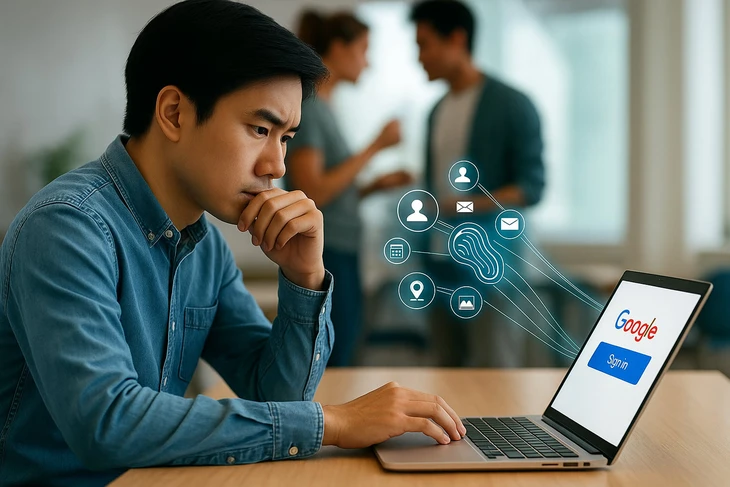
Signing in with Google can sometimes do more harm than good.
Signing in with Google: A privacy trade-off
Signing in with Google saves you time by eliminating the need to create or remember passwords for dozens of apps. You're instantly authenticated and synced with your ecosystem.
But when you tap “Allow,” you’re not just granting access to your email address. Depending on the permissions the app requests, you could be inadvertently granting access to your profile picture, your real name, your contacts, your calendar, the ability to read or edit files on your Google Drive, or even send emails on your behalf. And most people sign in in haste or out of trust without reading the permissions carefully.
The risks behind convenience
Security experts have repeatedly warned against granting too broad permissions to unknown apps. Here are the risks you may encounter:
Personal data leak (email, contacts, private documents).
Exploited for advertising purposes, tracked online behavior.
Being exploited to send spam, spread malware from your own account.
Lose control of sub-accounts if your Google account is locked or compromised.
Can you control it?
The answer is YES, if you proactively monitor and limit access.
You can access the link https://myaccount.google.com/permissions to see all the apps connected to your Google account and delete the apps you no longer use or have too deep permissions, read the requested permissions carefully before clicking "Allow" and enable two-factor authentication (2FA) to protect your account.
Technology is all about convenience. But convenience without awareness leads to a loss of control. Every time you tap “Sign in with Google,” ask yourself: “Do I really need to connect my Google account for this? And what am I giving away?”
Source: https://tuoitre.vn/dieu-gi-xay-ra-moi-lan-ban-dang-nhap-bang-google-20250529111504157.htm


































































































Comment (0)